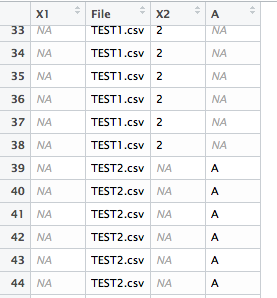Here are some commands used in R on a daily basis as they come to mind.
Checked with R version 4.2.2.
Example
Check the comments and command help for details.
#Install Package
#from CRAN:install.packages command
install.packages("Package Name")
#from Github:「devtools」package::install_github command
#github:URL:https://github.com/search?utf8=%E2%9C%93&q=language%3AR&type=Repositories&ref=advsearch&l=R&l=
install.packages("devtools")
devtools::install_github("Acount Name/Package Name")
#Loading the library:library command
library("Package Name")
#Randomly retrieve data:sample command
sample(LETTERS[1:24], size = 10, replace = TRUE)
[1] "B" "G" "S" "E" "E" "G" "X" "H" "R" "E"
#Check the class of data:class command
class(LETTERS[1:24])
[1] "character"
#Combine characters data
#paste command
#例1;Combine characters
paste("karada", 10, "いいもの", sep = " ")
[1] "karada 10 いいもの"
#例2;Combine characters without whitespace
paste0("karada", 10, "いいもの")
[1] "karada10いいもの"
#Create data.frame:data.frame command
TestData <- data.frame(Data1 = 1:5,
Data2 = 6:10)
#Check
TestData
Data1 Data2
1 1 6
2 2 7
3 3 8
4 4 9
5 5 10
#Select dataframe columns
TestData[, 2]/TestData[, c(2:10)]
[1] 6 7 8 9 10
#Select dataframe rows
TestData[2, ]/TestData[c(2:10), ]
Data1 Data2
2 2 7
#Subset of data:subset command
subset(TestData, TestData[, 2] < 8)
Data1 Data2
1 1 6
2 2 7
#Extract data, specify column names
#Useful in combination with regular expressions
TestData[colnames(TestData) %in% "Data2"]
Data2
1 6
2 7
3 8
4 9
5 10
#Check data structure:str command
str(TestData)
'data.frame': 5 obs. of 2 variables:
$ Data1: int 1 2 3 4 5
$ Data2: int 6 7 8 9 10
#Data Summary:summary command
summary(TestData)
Data1 Data2
Min. :1 Min. : 6
1st Qu.:2 1st Qu.: 7
Median :3 Median : 8
Mean :3 Mean : 8
3rd Qu.:4 3rd Qu.: 9
Max. :5 Max. :10
#Processed column by column, row by row:apply command
#MARGIN option set to 1 for columns
apply(TestData, MARGIN = 2, mean)
Data1 Data2
3 8
#Unify duplicates:unique command
unique(c(1, 1, 2, 2, 3, 3))
[1] 1 2 3
#Select Files
#Use「tcltk」package
library("tcltk")
paste0(as.character(tkgetOpenFile(title = "Select File",
filetypes = '{"XXXX file" {".extension"}}',
initialfile = c("*.extension"))))
#Select folder
#Use「tcltk」package
library("tcltk")
paste(as.character(tkchooseDirectory(title = "Select folder"), sep = "", collapse =""))
#Remove NA:complete.case command
x <- c(1, 2, 3, NA, 5)
x
[1] 1 2 3 NA 5
#Check data.frame
x[complete.cases(x)]
[1] 1 2 3 5
#Obtain the operating system
.Platform$OS.type
[1] "unix"
#Get working directory
getwd()
#Set working directory
setwd()
#Iterative process
for(n in 1:10){
show(1 + n)
}
[1] 2
[1] 3
[1] 4
[1] 5
[1] 6
[1] 7
[1] 8
[1] 9
[1] 10
[1] 11I hope this makes your analysis a little easier !!



